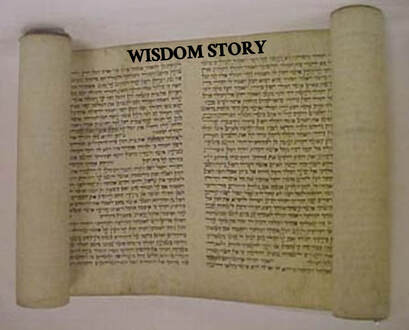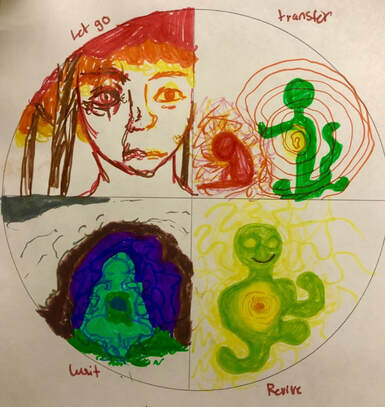 After getting hired as a chaplain for BH patients about three years ago and noting that there were no readily available curriculums in the chaplaincy world for spiritual care support groups, I immediately knew the approach I was going to use: Godly Play (or Spirit Play). For many years I have accompanied all of my three kids for Godly Play at our church, with me mostly serving as a “Godly Play door person” and keenly observing diverse facilitation styles of the trained Godly Play teachers. I have seen the effectiveness of the pedagogy grounded on Montessori theoretical frameworks which was very inclusive to different types of participants (age and mental capacity). While the Godly Play approach was sound, the only problem was that the selection of stories were limited by Judeo-Christian mythological narratives, which was limiting for my context as a chaplain in a secular hospital. However, looking for stories beyond the Judeo-Christian framework was right up my alley. In college, I was a Religious Studies major exposed to the diverse mythologies of cultures around the world. Early on, through the work of Joseph Campbell (influenced by Carl Jung), I was hooked on the universal archetypes. On top of being a world mythology geek, I have learned the significance of music after working with dementia patients. As also know the value of visual arts after serving as an art teacher and organizer of a summer arts camp program for inner city youth. With inclusivity as the main goal of my Spiritual Care Support Group sessions, I want to highlight in this blog why music, art and Godly Play (or Spirit Play) work as a method to facilitate support groups in BH: WISDOM STORIES: Studies have shown that stories activate our brains. As soon as we hear a story, our brains naturally want to connect the story to our personal experience. That is why metaphors work. Thus, mythologies with universal spiritual themes/archetypes are fabulous tools to reflect about one’s inner life and struggle. These include stories of our experience of change and transformation: the human journey from darkness to light, from death to resurrection, from being lost to being found, from disorientation to some clarity, from chaos to stillness, from despair to hope, from emptiness to meaning & purpose, from dis-ease towards healing. It gives the person feeling lost and disoriented the opportunity to map themselves in the endless cycle of ups and downs of life. It gives the person in crisis the mental and emotional space to see the bigger picture, a lens with a much wider perspective, instead of a very narrow, reactive and blind-spot-laden lens to view one's experience. The brilliance behind Godly Play is that instead of the hearer merely imagining the story in the mind, one is also able to see and, if they like, touch the story in a tangible way through storytelling objects laid out on the floor. In Montessori understanding of learning, “What the hand does the mind remembers.” One patient responded to the method, which he experienced for the first time, in this manner: “I have heard this parable numerous times in my life, but witnessing this story unfold before me through these objects on the floor allows me to reflect on this story in a different way – a deeper way.” Lastly, wisdom stories allow participants to share their story in a way that's comfortable to them. While some might choose to be vulnerable with the group by sharing the details of the "dark" and "stormy" moments of their life journey, the participant can simply agree and point out that the archetype ("dark storm") was something that they went through.  MUSIC & SONG: Just like storytelling, music activates the brain. Music has the magical power to tap into feelings, thoughts and memories hidden and bubbling underneath one’s consciousness/awareness. A kind of timelessness happens in music. By nature it is affective: organized sound puts us in the pre-verbal or pre-cognitive state of human experience. It helps us remember and reconnect with our sacred past in the present moment. If used wisely, music can be used as a sound to self-regulate: by making a musical sound, one has to breathe; but one can intentionally make a sound or musical tone that is calming, reflective, and meditative. If it is a song with poetic and metaphorical lyrics, it can put the listener in a prayerful and contemplative space. As one patient reminded me: “Singing is like praying twice.”  ART REFLECTION SHEETS: Like music, visual arts also invites us to move our hearts and minds in the affective dimension through color, lines, shapes and symbols. There are things that one can portray in shapes and color that may not be captured through words. This artist and mental health patient talks about how visual art has been an effective tool to express himself. Comments are closed.
|
Donnel Miller-MutiaJoin me in chewing the cud on mindful communication and relationships, self-awareness, spirituality and mythology. Archives
May 2024
Categories |
Proudly powered by Weebly
 RSS Feed
RSS Feed
